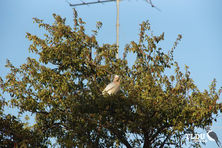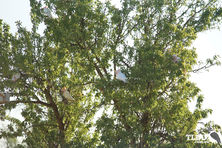
Shoppers Feedback:
Jan 17, 2017
Hello Ros,
I have now paid the invoice, but I would like to write to you just to say a big THANK YOU for getting me the Penguin!
The ChatterMate Penguin became a nice memory for me when I was in New Zealand, and I am so greatful to you for arranging so that I could have it! :-)
Thank you so much!!!!!!!!!!!
Regards,
Malin
Hi Ros,
Many thanks for your very kind email. I really appreciate your prompt reply!
I appreciate your advice regarding the decorations and customs. These are a gift for my daughter’s exchange student family so when she returns home on the weekend I will show her and see if she loves them as much as I do!
Thanks so very much again - I am truly grateful for your kind assistance.
Kind Regards
Bernadette
Ros,
Thanks again for the great customer service. It's a refreshing change!
Best regards,
Trevor
Hey Roz,
Thank you for your emails. Just loved my first order. The cute little Aussie bush critters are going to be used for an office Christmas decoration. My colleagues also liked them and talked about making an order to your site. I'll send you a photo when completed.
I'll be ordering more to send to my daughter's host family in America.
Fabulous service from you.
Kind regards,
Michelle
Thankyou. Order arrived today. One very happy grandson with his new beastly binoculars.
Regards,
Irene
- Home
- Wild Wonders
- Shop
- Aromas of Australia
- Australian Made
- Books
- Book Marks
- Christmas Decoration Sale
- Christmas Decorations
- Clocks
- Drink Holders
- Garden & Outdoor
- Gift Wrapping & Cards
- Home & Giftware
- Jewellery
- Keyrings
- New Products
- Pencils & Pen Holders
- Photo Frames
- Plush Toys
- Plush with Sound
- Sheepskin Rugs
- Stationery
- Stone Carvings
- Toys & Games
- Travel Goods
- Wedding
- Wild Figurines
- Wildlife Safety Products
- Wind Chimes
- Wine Charms
- View All Products
- Wildlife
- Australiana
- Explore
- Contact Us

Quick Facts
| Length: | 39 cm |
| Height: | - |
| Weight: | 370 grams |
| Colour: | - |
| Habitat: | Semi-arid and arid areas, dry woodlands, sand plains and dunes, banskia heathlands and Acacia shrubl |
| Food: | Seeds of grasses, fruit, roots, bulbs and insect larvae |
| Predators: | - |
| Status: | - |
The Major Mitchell's Cockato is a small, largely white cockatoo with pink on the sides of its head, around its neck, on its underbody and under its wings. The crest appears white when folded but when raised and spread it has a broad red band with a yellow stripe through the middle. This cockatoo is also known as Leadbeater's, Desert, Major Mitchell or Pink Cockatoo; Cocklerina, Chockalott or Wee Juggler.
The stunning light pink colour makes this cockatoo unmistakeable. It is much paler than the Galah.
Major Mitchell's Cockatoo is mainly found in inland arid areas, but sometimes strays well outside its normal range. In Queensland it is generally found south of 25*S in central, southern Queensland. In New south Wales it is widespread west of 147*E, but is found further east. In Victoria it is mostly restricted to the northwest of the state. It is found in a range of arid inland areas in South and Western Australia and in the Northern Territory,south of 17*S. (Birds seen near Brisbane, Sydney or Canberra are probably escapees from aviaries).
Major Mitchell's Cockatoos live mostly in semi-arid and arid areas, in dry woodlands, particuarly mallee. They are also found in stands of River Red Gum, or Black Box, and on sand plains and dunes. Sometimes they are found in other areas such as Acacia shrubland with a spinifex ground cover or Banksia heathlands.
Major Mitchell's Cockatoos may live in much the same area all year round if there is sufficient water. They can be partly nomadic in arid areas, moving in response to the availability of food and water.
Major Mitchell's Cockatoos lives on a range of foods - seeds of grasses and herbaceous plants, fruit, roots, bulbs and insect larvae.
Major Mitchell's Cockatoos nest in large hollows in trees such as River Red Gum, Black Box, Coolibah, or Callitris. The eggs are laid on a bed of decayed wood, woodchips and bark. Male and female will chew at a tree-hollow to enlarge it, and both will sit on the eggs while incubating them. Both male and female feed and preen the chicks.
Populations of Major Mitchell's Cockatoos have declined and their ranges been reduced by: land clearing, which has decreased the availability of nesting hollows; trapping and nest-robbing for the captive bird trade; replacement of suitable habitats with cereal crops, which reduces food variety.
The species name, leadbeateri, of the Major Mitchell's Cockatoo commemorates Benjamin Leadbeater (1760 – 1837), a London natural history merchant who supplied specimens to the British Museum.
Last Updated: Thursday 18th July, 2013
BirdLife Australia - www.birdlife.org.au
BUSH e-TELEGRAPH
Signup for our monthly newsletter the "e-Telegraph"
Quick Links
Home | The Beginning | About The Land Down Under | Wild Wonders | Advertise on Wild Wonders | Christmas Decoration Sale | Christmas Tree Decorations | Drink Holders | Plush with Sound | Stone Carvings | Wildlife Wine Charms | Freebies | Australian Wildlife | Help Our Wildlife | Australiana | Photo of the Month | Explore The Land Down Under | Contact Us | Legal Notices


